Garden Huckleberry WineAs I mentioned in my previous post, garden huckleberries are a unique berry in the nightshade family. They are toxic when unripe, have little taste when ripe, but when fully ripe AND cooked, they are absolutely delicious and make a beautiful dark purple jam. After making a batch of garden huckleberry preserves, we still had quite a few berries left over in the freezer. Since my husband and I love fermentation we decided to experiment with a one-gallon test batch of garden huckleberry wine. We both have a Bachelor’s degree in biology and I also have a concentration in microbiology so we enjoy the science behind fermented foods and drinks, although neither one of us is an expert. Thus far we have made kombucha, sauerkraut, kimchi, wine and beer from kits, mead, and now garden huckleberry wine. We also currently have a maple wine (which smells absolutely delicious!) undergoing secondary fermentation and will hopefully be the subject of a future blog post. This summer we also would like to experiment with dandelion wine and a spruce-tip beer. We planted wine grapes on our property in the spring of 2017 which will hopefully produce their first grapes this summer (2019) on 3-year-old vines. These grapes, Marquette, are a red grape well suited to our climate (zone 4) however, they can be acidic as short/cool season grapes often have difficulty fully ripening. Therefore, blending is often used to reduce acidity and increase sugar content of these grapes if needed. However, as more growers are cultivating the Marquette variety, they are having success producing a very nice dry red wine or slightly sweet port that is not overly acidic. We are hoping in addition to making 100% Marquette wine we could also find some fruit or other grapes varieties to use for blending. Blackberries or raspberries are commonly used to make a delicious berry-Marquette port. When we realized we had extra garden huckleberries we thought it would be good to practice making wine from scratch rather than a kit and also possibly find a good fruit to blend with the Marquette grapes. In this post, I will assume that the reader already has some experience fermenting. If not, a good place to start is to buy a wine or beer kit, to first determine if you enjoy brewing. Once, you have tried a few kits, read a few books, looked at some websites, and/or listened to some podcasts, it is much easier to experiment with fermenting from scratch. To make our garden huckleberry wine we modified a recipe for blueberry wine (see our modified recipe below). As garden huckleberries must be cooked to bring out their flavor, I first cooked the berries with a little water and crushed them with a potato masher to release the juices. I cooked them for about 20 minutes added 1 tablespoon of lemon juice, cooked an additional 5 minutes, and then added the sugar to the berries and mixed until dissolved. Garden huckleberries are a very tough fruit with an almost leathery skin so in the future I may use an immersion blender to help pulverize the berries rather than just a potato masher. After the sugar was dissolved, we brought the water up to 1 gallon. At this point you can check the specific gravity to make sure the sugar content is correct, generally you want to start wines around 1.090 depending on what you would like your final alcohol concentration to be. When making a fruit wine you would generally add in one Campden tablet/gallon or potassium metabisulfite at the correct concentration to kill any wild yeast on the berries. Since we had just boiled our berries, I assumed most wild yeasts would be killed and skipped this step. We then added the tannin, acid blend, pectic enzyme, and yeast nutrient and mixed well. I am not sure if both the lemon juice and acid blend are necessary and may skip the lemon juice next time. The pectic enzyme will digest the pectin in the fruit which otherwise could make the must gelatinous; also excess pectin will also leave your wine hazy and keep it from clarifying properly. Yeast nutrient is used to help give the yeast a boost, yeast energizer can also be added or you can buy them already mixed together under specific brand names. If fermentation slows before completion you can spike in more nutrient and/or energizer to help push fermentation to completion. Some brewers also like to add in grape juice concentrate to their fruit wines, which increases sugar content so make sure to adjust final sugar levels to the correct specific gravity after mixing this in. This will also make your wine fruitier. As we wished to see what a pure garden huckleberry wine tasted like, we did not add any grape juice concentrate. The last step is to add the yeast. Since we had boiled the berries it was important to make sure the must was not too hot, you generally want it around room temperature. We used Lalvin K1-V1116 yeast which is supposed to be good for fruit wines and also has a high alcohol tolerance (18%). This was also important since we wanted to make sure it would ferment to dryness. We dry pitched the yeast and stirred it in, however, most yeast packets will recommend activating the yeast prior to pitching. If you activate first, make sure you follow the instructions exactly as written, otherwise you may shock the yeast too much which will prevent fermentation from starting. We fermented in a 2-gallon bucket fermenter that we had cleaned with one-step cleanser and sterilized with potassium metabisulfite. Make sure everything that comes in contact with your must is as sterile as possible. After everything was mixed well, we covered the fermenter with a lid containing an airlock to let out the CO2 gas released during fermentation. Generally, you should see bubbling in the airlock within 24-48 hours. With most fruit wines you want to stir the must 1-2 times per day, otherwise the fruit cap will stay on the top and you will have less flavor and color released into the liquid. The more the cap comes in contact with the liquid. the more color, flavor, etc. will be released into the wine. The wine will likely ferment for approximately 2 weeks or even longer depending on the type of yeast used. When bubbling starts to slow you can start testing the specific gravity with your hydrometer and when it reaches 1.010-1.020 you can rack it to a secondary fermenter (a 1 gallon glass carboy/jug) or you can leave it in the primary until it completes fermentation (specific gravity less than 1). Before racking you must strain out the berries and debris and move the wine to a cooler place if possible, to clear. Every week or two, as more debris settles you can rack to a new 1-gallon jug. At this point if fermentation is complete you can cap the jug or use a bung and not worry about the airlock. Make sure fermentation is 100% complete as we have had a batch of mead blow the bung out of the jug when we removed the airlock too soon. You can also add a Campden tablet after each racking or just wait before bottling if you do not like to have too high of sulfite levels in your wine. I do not like to use more than 2 tablets/gallon of wine total. Those who are sensitive to sulfites may wish to try even less or skip it altogether although this does increase the risk of contamination. Once the wine has clarified to your liking you can bottle the wine and age it, generally 3-6 months minimum. If you prefer a sweeter wine you can back sweeten before bottling but you must add in potassium sorbate to prevent fermentation in the bottle. You can also add in potassium sorbate if you wish to age your wine longer and prevent spoilage. We tasted a glass of our wine before bottling and were very impressed by its taste. It was slightly sour (maybe skipping the lemon juice next time would be better), slightly bitter and tannic, with definite flavors of garden huckleberries. Although it started out as a very dark purple color it mellowed to a more red-purple color. If you prefer your wines with more intense flavors you can add more than 3 lbs of fruit and if you prefer them lighter, you can add less. Overall, we liked the initial flavor of the wine well enough that I started dozens of garden huckleberry plants this spring (as opposed to the 6 plants we had last year) so we can hopefully make a larger 3-5 gallon batch next year. Garden Huckleberry Wine Recipe (1 Gallon)3 lbs berries (garden huckleberries, blueberries, or other berries) 1 T lemon juice ~1.8 lbs sugar 0.5 tsp acid blend 0.5 tsp pectic enzyme 0.6 tsp yeast nutrient 0.2 tsp tannin Campden tablets (1 tablet per gallon) 1 package yeast (Lalvin EC-1118, Lalvin 71B-1122, Lalvin K1-V1116, or others)
14 Comments
Garden HuckleberriesAlthough I was unsure about garden huckleberries as they are a member of the nightshade family and are toxic until fully ripe, I decided to try growing them in the summer of 2018. I was pleasantly surprised by the plants as they were extremely easy to grow even with a particularly difficult growing season, which included an early-mid-summer drought and mid-summer hail. However, I only needed to harvest them one time at the end of the season which is much easier than many other berries that must be picked every day or two. However, once I made and tasted garden huckleberry preserves, I became a huge fan of the little berries. Garden huckleberries are not true huckleberries (genera Vaccinium and Gaylussacia) nor are they blueberries which are a type of huckleberry in the Vaccinium genus along with cranberries and bilberries. Instead, garden huckleberries are scientifically known as Solanum scabrum, a member of the nightshade family. Garden huckleberries are generally grown as annuals, and as such are one of the fastest ways of cultivating fruit. You do not need to wait 3-5 years to start harvesting fruit like many of the fruit trees and bushes that are more commonly available. Also, garden huckleberries do not take up tons of space in the garden but, do plan to allocate space similar to a tomato plant. Although nightshade plants can be very scary due to their well-known toxicity, many of our commonly grown crops are in the same nightshade family, including tomatoes, peppers, eggplant, tobacco, and potatoes. The biggest obstacle I had growing garden huckleberries was not being able to tell when they were fully ripe. I live in Wisconsin so our growing season (zone 4) is relatively short. Although garden huckleberries have only 75 days to maturity, I still found that many berries did not completely ripen before our first frost which is usually around the end of September, even though they had significantly more than 75 days to mature. I also started them from seed inside before transplanting at the end of May to give them even more time to mature. Many berries ripened to a black color throughout the summer and supposedly once they turn black and glossy, if you wait 2 more weeks, they will turn a dull black color indicating they are fully ripe and also no longer toxic. However, I found that the berries ripened at different times and it was too much work to try and pick out just the ripe ones. However, these are tough berries and generally do not get overripe so I decided to just let them on the plant until the fall. A mild frost is also supposed to enhance their flavor as well so this was another reason to wait. I finally harvested the night before our first “hard” frost. Literally, my family, including my in-laws, ran out to the garden in the dark using our car lights to see, and harvested all the berries before they froze. The hardest part of this whole process actually occurred after harvest. I spent a long time sorting ripe from unripe berries and making sure all the stems were removed. Some berries may look fully black but still have a tinge of green and if you cut them in half you will find the inside has not yet changed color. I threw out any berries that I could tell were obviously unripe. Since fall/early winter is crazy for my business I decided to just wash the berries and freeze them on a baking sheet before transferring them to freezer bags. I then forgot about them until January when the worst of the holiday rush was done. Once I had more time, I decided to try making garden huckleberry preserves. I am a huge fan of Tyrant Farms so I decided to use their recipe. These are not well-known berries and there is not a ton of information out there about them. However, one of the keys to these berries is that they must be cooked for their flavor to develop. If you eat them unripe, they are toxic, if you eat them ripe but raw, they should no longer be toxic but they really have no taste or maybe a slightly bitter taste. Trust me, you will not want to pop another one in your mouth. However, as I found out after tasting the cooked preserves, they taste absolutely delicious. The flavor is somewhat like blueberry jam. Some recipes recommend cooking them with baking soda to remove bitter flavors, but I found this was not necessary at all. Just make sure you are using fully ripe berries. A long cooking time is recommended as the skins are very tough, slightly leathery, and the berries can be hard to pop. Although I did follow the recipe and canned the preserves, the pH of the berries is unknown and the safer option is to make freezer jam instead of canning it. After making a batch of the preserves, I still had several pounds of berries remaining in the freezer so we decided to try making some garden huckleberry wine (yum!) which will be the topic of my next post once we get it bottled. |
Details
AuthorIn 2016, my family and I moved from the New York City area to small town Wisconsin. Our move, this website and blog (and our previous Etsy store) is the result of our desire over the past several years to simplify our lives, increase our quality of life, reconnect with nature, and enjoy a more self-sufficient life. I grew up as a country kid in central Pennsylvania working on my grandfather's fruit farm and as a corn "de-tassler" at a local seed farm. My background is in biology where my love of nature originated. I am a former research scientist and professor and have now transitioned to a part-time stay-at-home mom, self-employed tutor, and small business owner. Thank you for taking the time to check out my site. Archives
July 2024
Categories
All
|
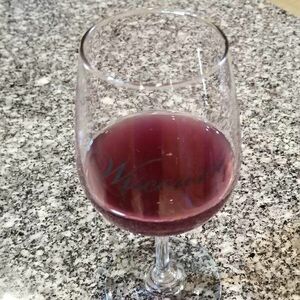

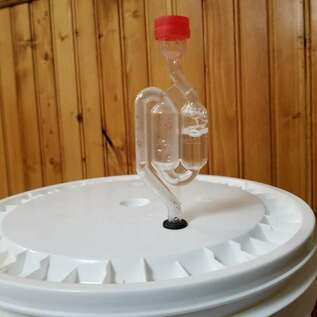
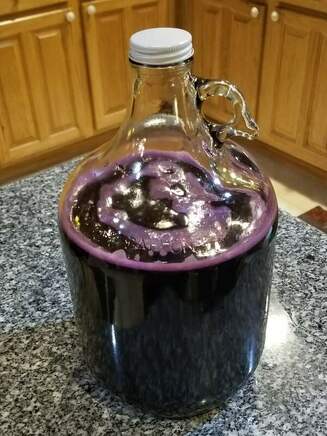
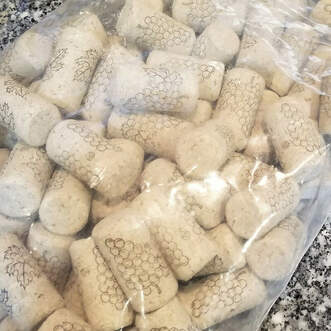
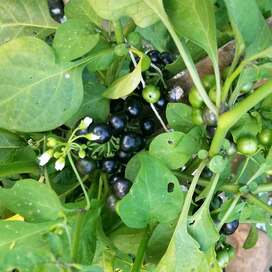
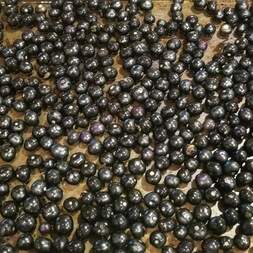



 RSS Feed
RSS Feed